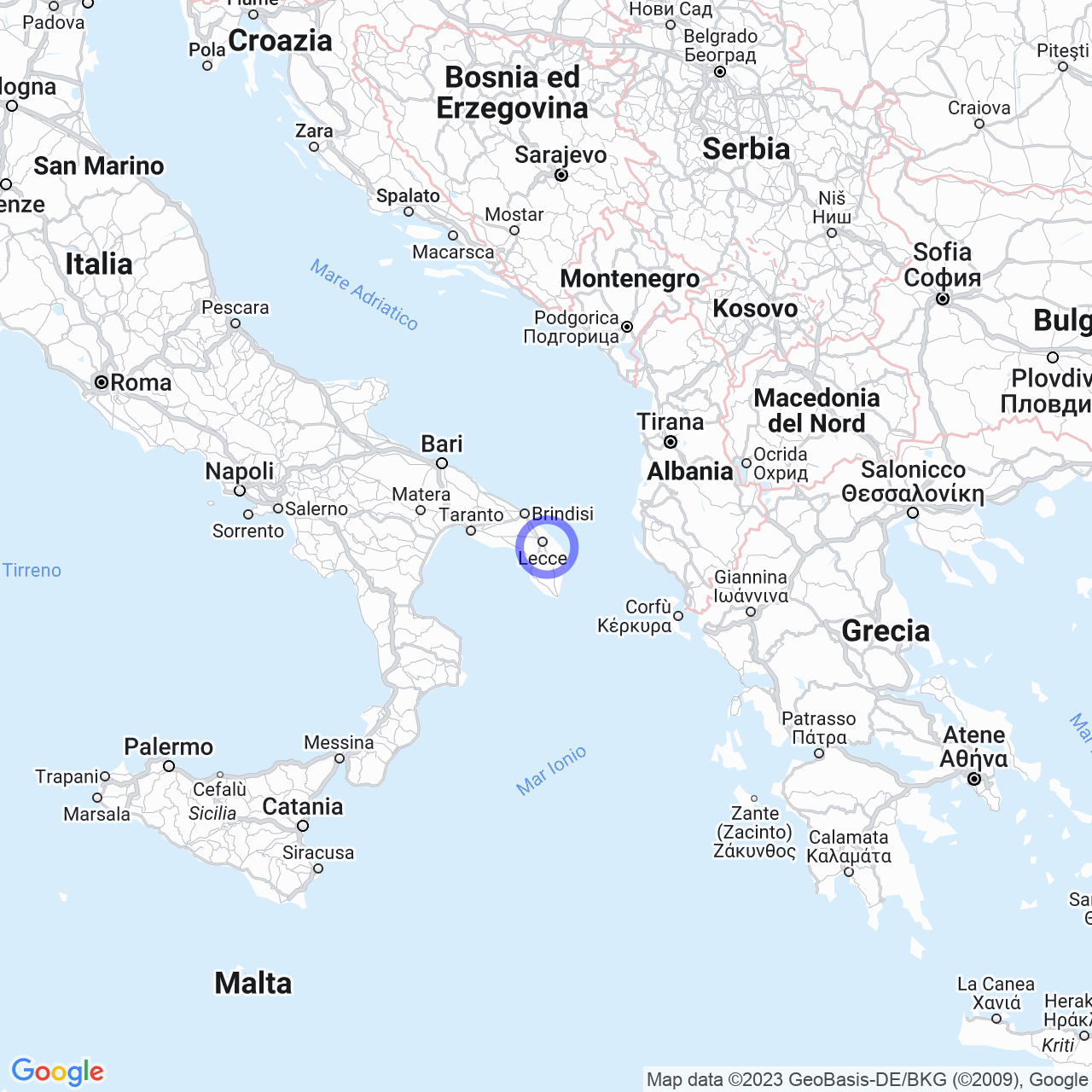Merine
Origins of the name
Why is Merine called that? There are many interpretations regarding the etymology of the name, but the most plausible ones date back to the Florentine vulgar language "màrie", derived from the heraldic term "mera" which means pleasant, delightful place with good pastures, or to the term "merinos" which refers to the excellent Spanish sheep breed. In short, it seems that the name of this hamlet is linked to agriculture and livestock.
History
Merine was born a long time ago, perhaps before Lizzanello. It seems that the hamlet was born in the high Middle Ages, around a Basilian grange. Until the XIII century, Merine was part of the County of Lecce and was endowed in 1353 to Carovineis who owned it until the XV century. Later, the hamlet passed to the Montenegro and from 1613 to the Palmieri who purchased it for 20,500 ducats. In addition to the courtyard dwellings, Merine boasts modern constructions that emphasize even more the charm of the history that has marked this small village.

The urban structure
The historic center of Merine has a somewhat retro atmosphere. The buildings are typical of rural houses, built with irregular masonry and sloping roofs covered with tiles. Furthermore, the urban structure of the village revolves around farmhouses and other fortified constructions. This helps us understand that they were dwellings occupied by the upper classes of the time, with the function of protecting themselves in some way from brigands and Saracen and pirate incursions, coming from the sea until the XVIII century.
Monuments and places of interest
Religious architecture
If you love art and religious architecture, Merine is the place for you. The Retorial Church of S. Maria delle Grazie is the most important religious building in the village. Rebuilt in 1878 on the basis of the previous construction that had deteriorated, the church is dedicated to Santa Maria delle Grazie. It has a sober façade in limestone, ending with a triangular pediment, typical of neoclassical style, and a clock tower.
But the most beautiful spectacle can be seen by entering the temple and observing the wooden portal, made in 1983. The sculptor from Surbo Paolo Lani has embellished it with embossed copper tiles that represent the trades of the now faded peasant world of Salento, evangelical scenes featuring the Virgin and Jesus, and the story of the "Fascia". In the upper part of the portal, there are two panels that allude to the most venerated Marian titles in Merine: Santa Maria delle Grazie and Maria SS. Assunta. The Latin cross interior is very suggestive and extends for about meters.
Merine: art of the past and present
Merine is a place where art blends the past with the present. Indeed, walking through the streets of the village, you can admire several works by local artist Marco Di Bari. Among the most beautiful is certainly the one dedicated to the disappeared Menhir that could be found on the nearby hill, now preserved only in local historical memory. It's a large sculpture in limestone, placed in a small square and surrounded by an olive garden. But it's not the only work by the artist that you could find while strolling through the village. Discover them all!
Journey into nature
Merine is a small village rich in natural beauty. There are green hills, centuries-old olive groves, and breathtaking views that will leave you breathless. The countryside around the village lends itself to walking or cycling excursions, with suggestive routes towards Lizzanello, Galugnano, and Novoli.
Conclusions
Merine is a hidden gem in Salento that deserves to be discovered and appreciated. Its history, religious architecture, and artistic works make it a unique place in the world. Furthermore, the beauty of the surrounding nature will lead you to take long walks discovering breathtaking panoramas and a territory that deserves to be fully experienced. I conclude with a wish: may you visit Merine as soon as possible. I assure you that you will not regret it!
